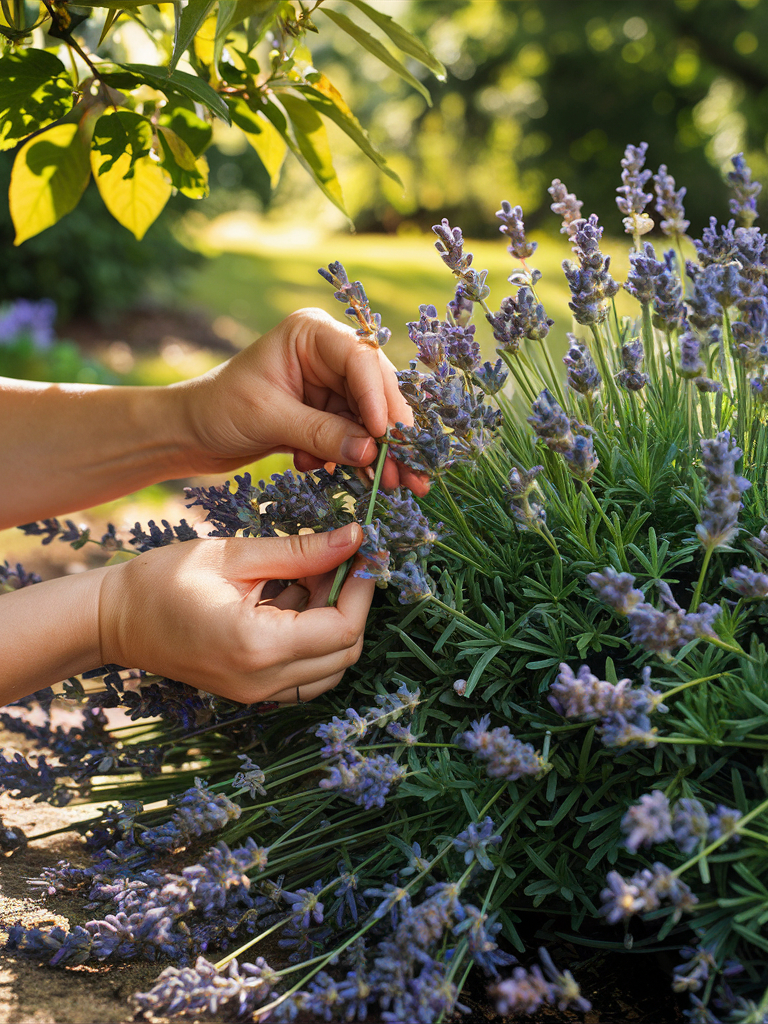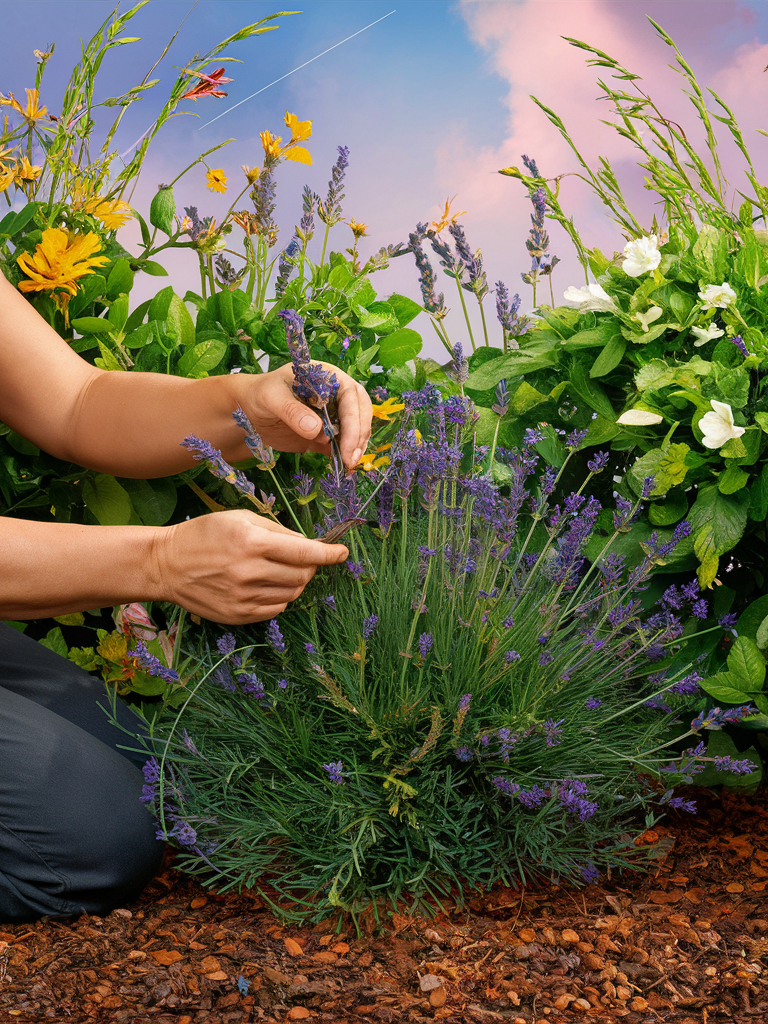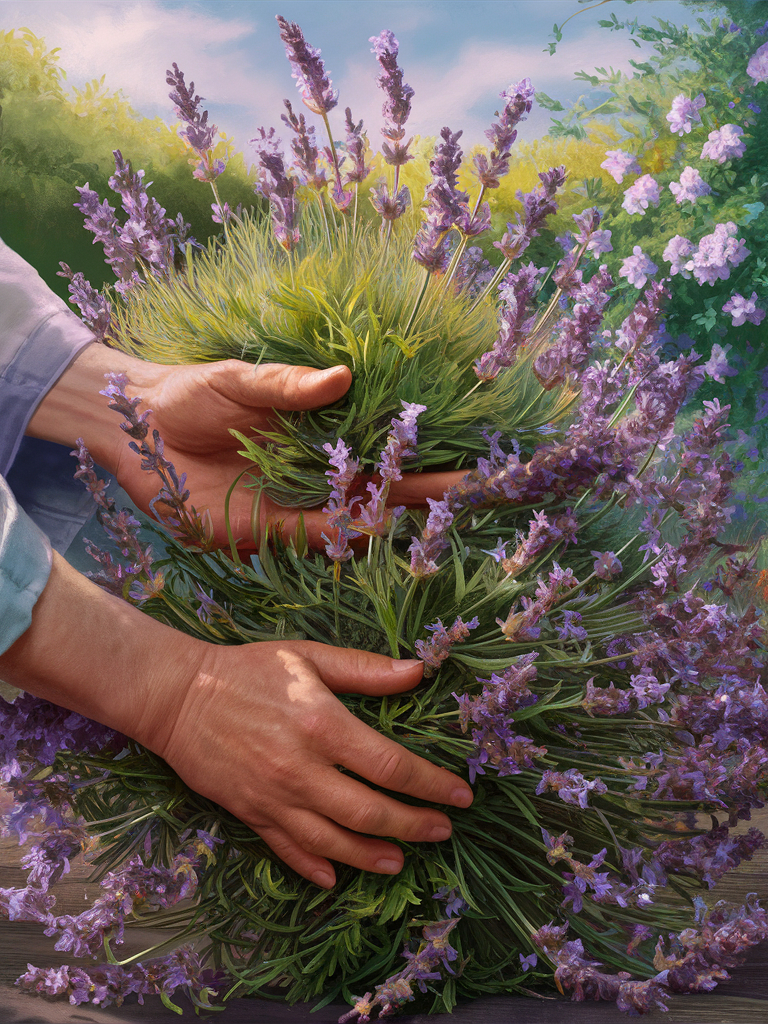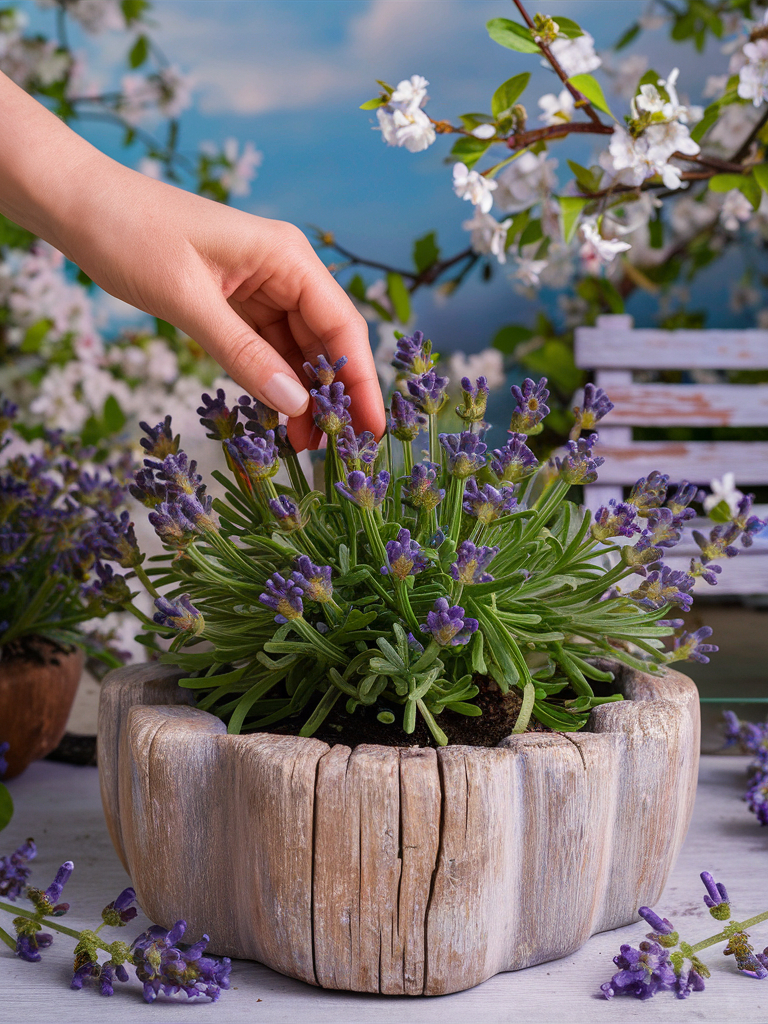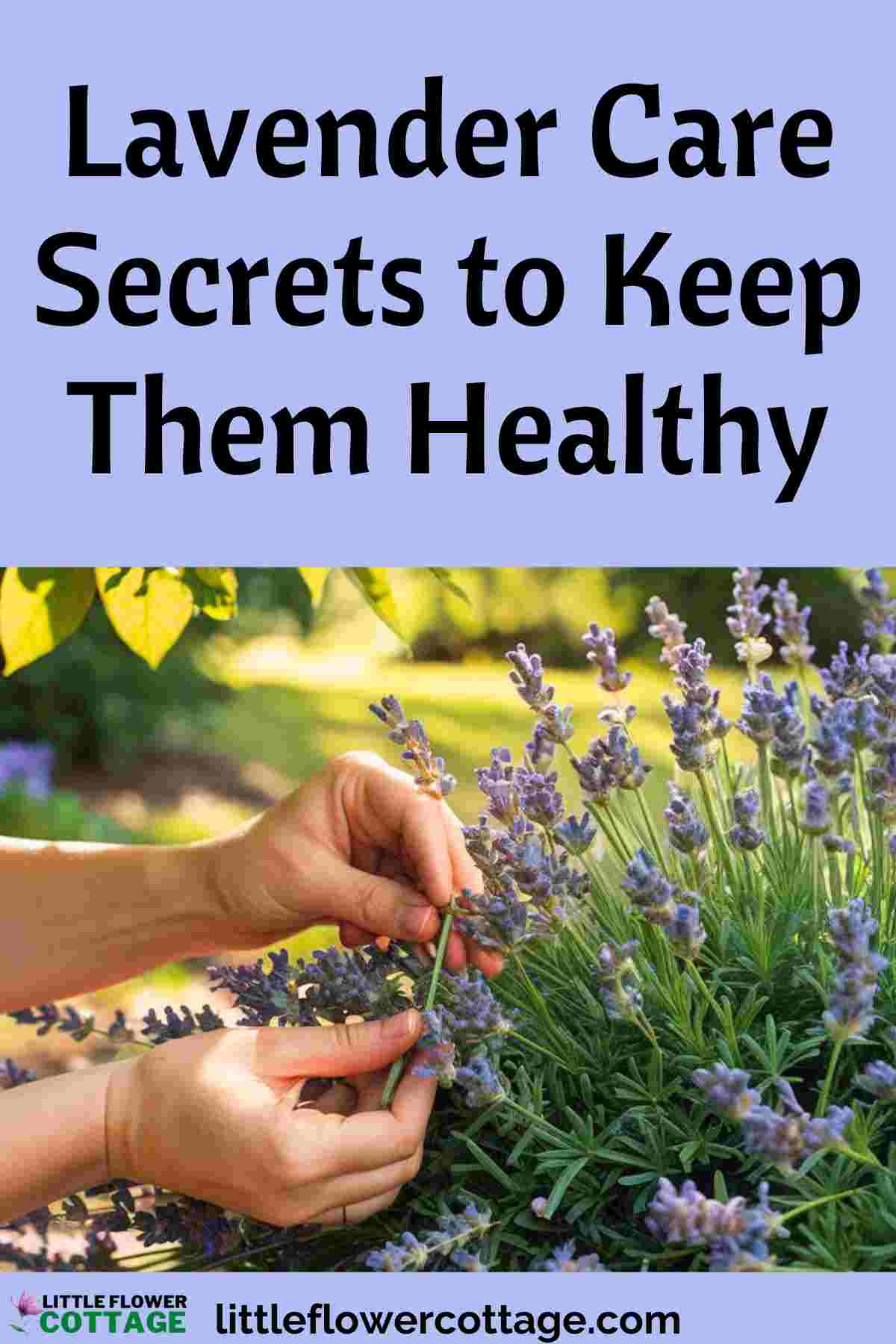Keeping your lavender healthy and thriving comes down to more than that just planting it and hoping for the best. Do that and chances are you’re lavender will struggle or not grow at all.
In this guide I’m going to take you through some useful tips and information about growing lavender. It will help you to make sure your lavender is successful and thrives each year.
Varieties of Lavender
Not all lavenders are the same. And the variety you choose or have will make a difference to how you care for it and how likely it is to grow well.
- English Lavender (Lavandula angustifolia) Known for having a lovely sweet scent. It’s highly tolerant of the cold which makes it a good choice for cooler climates.
- French Lavender (Lavandula stoechas) This variety has distinctive petals on top of each flower and does better in milder climates.
- Spanish Lavender (Lavandula stoechas): Recognizable by its unique rabbit ear petals. One that’s hard to miss in a garden because of the way it looks.
- Lavandin (Lavandula x intermedia) A hybrid between English and spike lavender. Well known as a good choice for making essential oils due to its stronger fragrance and larger flowers.
The first step to making sure you successfully grow lavender is to pick the right type. And that should be based on your climate and what you want from your lavender.
Preparing the Soil
Lavender loves well drained soil. So sandy, slightly alkaline and not too rich. Quite similar to Mediterranean soil.
This is how to prepare your soil for lavender:
- Drainage: If your soil is heavy try adding sand or gravel as it will improve the drainage.
- pH Level: Aim for a pH between 6.5 and 7.5. You can add lime to raise the pH if needed.
- Soil Composition: Mix in some organic matter but don’t overdo it. Lavender doesn’t need soil that is overly rich.
Planting Lavender: Location, Timing, and Technique
Where and how you plant lavender can have a huge impact on how well it does. There’s a few things to think about to make sure you get it right:
Choosing the Right Spot
Lavender thrives in full sun and well drained soil. So choose a spot in your garden that gets at least six hours of direct sunlight every day.
If your soil retains water or feels heavy then try raising your beds or adding gravel to it as this can improve the drainage.
Planting Time
The best time to plant lavender is in the early spring or late fall. This lets the plants establish themselves during the milder weather and avoid getting stressed by the summer heat or cold of the winter.
Planting Technique
Space any plants about 18 to 24 inches apart as this will let them get enough air. If you don’t you run the risk of disease spreading between plants.
Dig a hole just deep enough to fit the root ball, set the plant in gently and cover it with soil. Don’t bury the plant too deep as this can result the stem rotting.
Nurturing Your Lavender: Water, Mulch and Fertilization
Lavender is fairly low maintenance once it’s established. But you need to understand and be confident when it comes to watering, mulching and fetilizing your lavender to make sure it’s healthy and succeeds.
And we all know that proper care doesn’t end once you’re done planting. So follow these tips to keep your lavender in top condition:
Watering
Lavender is drought tolerant once it’s established. But young plants need consistent watering.
During the first growing season water it deeply but only about once a week (more during extended dry spells). Once mature lavender should only need watering when there are prolonged periods of drought.
- New Plants: Water regularly during the first growing season. Aim for about once a week or when the top inch of soil is dry.
- Established Plants: Reduce watering. Lavender prefers dry conditions so water only if there is a long dry spell.
- Overwatering: Avoid it at all costs. Too much water can give your lavender root rot which is one of the most common killers.
Early Care
In the first growing season your lavender is going to need more attention than afterwards. Water it once or twice a week, depending on the weather. Water more often when it’s dry and hot and water it less so if you’re getting a lot of rain. The soil should dry out between waterings so you don’t get any moisture related problems.
Mature Plant Care
Once your lavender is established it requires a lot less water. They thrive in dry conditions. So during the peak of summer water it deeply every two to three weeks unless you have an extreme drought. Always check the top few inches of soil. If it feels dry then it’s time to water.
Mulching
Mulch helps retain soil moisture and keeps the roots cool (which they like). Use organic materials like chopped leaves or bark. However be sure to keep mulch away from the plant’s base, otherwise you might get too much moisture and potential fungal issues.
Choosing the Right Mulch
I would look for organic mulches such as fine bark or gravel. They are ideal for lavender because they improve drainage while still giving your plant the benefits of mulching. Gravel, in particular, reflects heat up to the plant which copies the lavender’s native Mediterranean environment.
Application Tips
Apply the mulch around the base of your lavender leaving a small gap around the stems. This is so moisture doesn’t buildup directly against the plant as this could cause rot. A layer about two inches thick is enough. Refresh the mulch annually so it doesn’t lose it’s benefits and it will also keep your garden looking neat.
Fertilizing
Lavender generally doesn’t need heavy fertilization, nor does it require a lot much in the way of additional nutrients if you’ve planted it in well draining soil. Over fertilizing can result in your lavender growing too much foliage with little in the way of flowers.
If your soil is particularly poor then try a light amount of a balanced, slow release fertilizer in the early spring.
When to Fertilize
The best time to fertilize lavender is in the early spring as it starts to show new growth. This gives them a boost at the beginning of the growing season.
Don’t fertilize late in the year as this can lead to tender new growth that will suffer in the winter.
Choosing Fertilizers
If you do decide to fertilize look for a balanced, organic fertilizer with equal parts nitrogen, phosphorus and potassium (look for a NPK ratio like 10-10-10). Apply according to the instructions on the package but at half the recommended strength. This is more than enough to give your plants a boost without overwhelming them.
Alternative Nutrition Options
Composting is another great way to improve the the soil around your lavender. It gives a slow release of nutrients which is just what lavender likes.
It also improves the structure of the soil, making the drainage and air circulation better. A thin layer of compost applied in the spring can be all the fertilization it will need.
Pruning
Pruning is a big part of maintaining a healthy lavender:
When to Prune
The best time to prune lavender is after it has flowered, which is generally in the late summer. Doing it at this point helps prepare the plant for the winter and also encourages strong growth in the spring.
This guide goes into more detail about the best time for pruning.
How to Prune
Use clean, sharp shears and cut back around a third of how much the plant has grown in the current year. This helps the plant keep it’s shape and also encourages it to grow more densely.
- Use sharp, clean shears to make clean cuts.
- Avoid cutting into the woody part of the plant. You should focus on the green, leafy sections.
- Shape the plant into a mounded form to stop it from becoming leggy.
For a more in-depth guide to pruning lavender try our easy to follow steps.
Troubleshooting Common Problems
Even with perfect care problems can still crop up. These tips will help you to tackle the most common ones:
Pest Intrusions
Aphids and whiteflies can target lavender. Fight them using a gentle insecticidal soap or neem oil. Apply it in the early morning or late evening to so your lavender doesn’t get sunburnt.
Disease
Root rot and fungal diseases are common if you overrated lavender or you’ve planted it in poorly draining soil. To stop this from happening make sure your lavender has good air circulation and well draining soil. Cut away any affected areas as fast as possible so it doesn’t have a change to spread.
Environmental Challenges
Frost can damage young lavender plants. If a sudden cold snap is forecast cover your plants with a breathable fabric overnight to protect them.
Harvesting Lavender
One of the joys of growing lavender is harvesting its blooms. Follow these tips to do it right:
When to Harvest
The best time to harvest lavender is when the buds are just opening but before they are fully open. This is when the oils ate at their highest concentration.
How to Harvest
- Use sharp scissors or pruning shears to cut the stems.
- Cut above the leaves, leaving a few inches of stem.
- Get the cut stems and put them in small bunches before hanging them upside down in a dark, dry place to dry.
Lavender Care All Year Round
Keeping your lavender healthy throughout the year involves some specific seasonal care. Here’s what to do in each season:
Spring
- Prune back about one third of the plant as it will encourage new growth.
- Apply a light layer of compost or a balanced fertilizer.
- If there are any signs your lavender had pests or disease then treat it quickly.
Summer
- Water regularly but sparingly, especially during dry spells.
- Deadhead spent flowers to encourage more blooms.
- Harvest lavender when the buds are just opening.
Fall
- Reduce watering as the weather cools.
- Prune lightly to tidy up the plants.
- Look closely for root rot or fungal infections.
Winter
- In colder climates protect your lavender with a layer of mulch.
- If you’re in a very cold region you may want to move your growing lavender in pots that can be moved indoors.
- Avoid heavy pruning during this time.
Using Lavender
Lavender is incredibly versatile. And once it’s thriving it’s not just a beautiful plant in your garden. These are a few popular ways to use your harvested lavender:
- Culinary: Add dried buds to baked goods, teas or even as a seasoning for meats. You can even make lavender lemonade.
- Aromatherapy: Use the dried flowers in sachets, potpourri or make your own lavender essential oil.
- Crafts: Create beautiful wreaths, bouquets or lavender wands.
Use these 10 creative uses for lavender in your garden to inspire some great ideas.
By following these steps and understanding what your lavender needs you’ll be in the best place to get vibrant and thriving lavender that lights up your garden.


